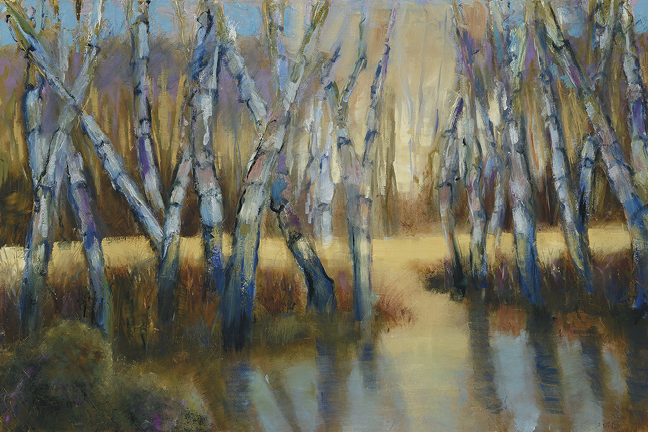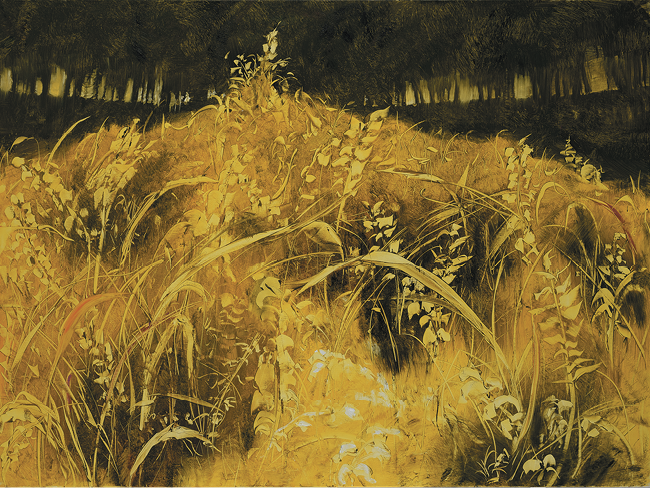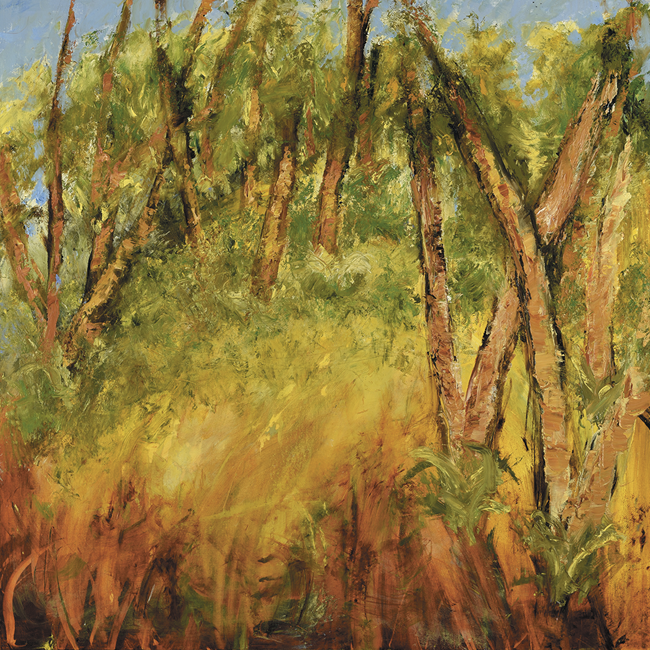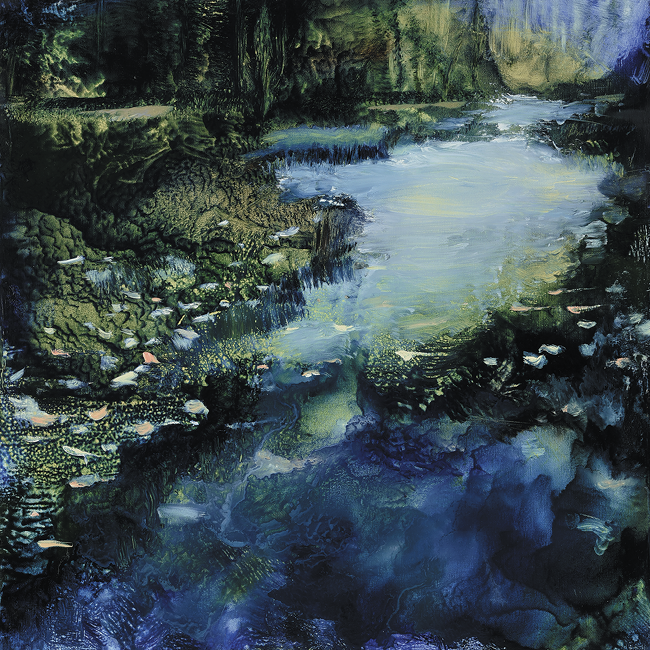- Home
- Media Kit
- MediaJet
- Current Issue
- Past Issues
- Ad Specs-Submission
- Reprints (PDF)
- Photo Specifications (PDF)
- Contact Us
- PRIVACY POLICY
- TERMS OF USE
![]()
ONLINE
![]()
ONLINE

A Poetic Exercise
Where did your passion to be an artist develop?
I did not realize I had the passion at a young age, but I should have figured it out as my mother was a painter. I was her sketch model, and I associate much of my intertest to her. My sister was a very good artist and did amazing work with pastels. When I was in college, an art teacher pulled me aside and suggested that I choose art as a career. That set me on my path.

Sunlight on Birch Trees 24 by 36 inches oil on canvas
What does expressionistic painting mean to you?
Expressionist painting is so personal. It is an experience. The painter uses resource materials, photos, nature – the outdoors and more – to be inspired by the colors, the movement, the atmosphere. My painting is less a process of copying the world around me than a poetic exercise to show how I feel about the subject. I absorb the visual information, which is blended with my past artistic experience, knowledge, and all the paintings I have studied. It seems to flow through my hands to the canvas. It will tell a story and be an expression of my subject. The colors I paint are my joy and the gesture of the painting is my passion.

Flora in the Meadow 30 by 40 inches oil on canvas
I can only explain it by saying that if you look at a tree, someone may paint that tree. Expressionistic painting also wants you to know how the artist feels about the tree. The expressionistic part is being guided by feeling and color. As an expressionist painter, I deal with one thing – the emotion created in the painting. I want people to feel the way I do about nature, to stop and look and appreciate it, to fall in love with it again.

Trees on the Hillside 36 by 36 inches oil on canvas
What led you to doing diptychs?
I started doing diptychs, which are pairs, because it allowed me to make a much bigger statement. It gives an artist more opportunity to put big plans and designs together, and more room to do things. It is also very practical since you can hang the pair together or separately.
Will you discuss your use of colors?
To me, color is magic. It is the joy in the painting. It is not just the color – it is how colors work together, which is often referred to as simultaneous contrast. I try to put colors next to each other that I find exciting, and I often describe it as colors “singing together.”
.png)
Wild Meadow Flowers 30 by 30 inches oil on canvas
Will you discuss your focus on philanthropy and supporting charities?
My husband, Bob, and I support many charities. It is a way of being thankful for what we have been blessed. My earliest and longest running relationship with a charity is with Family Centers in Greenwich and Lower Fairfield County, Connecticut. Family Centers does amazing work in its mission to empower children, adults, families, and communities to realize their potential. We do a leadership award each year for a person who has expressed talent and leadership.
I also adore Silvermine Arts Center which is not a charity, but relies on donations. Silvermine provides an environment and atmosphere in which art and artists can develop and flourish.

Still Water 30 by 30 inches oil on canvas
Our most innovative charity relationship is with the Institute of International Education (IIE) paired with the Janet Hennessey Dilenschneider Scholar Rescue in the Arts. We have rescued endangered artists and found safe places for them to continue their artwork. We have also enabled young Fulbright scholars to enjoy a several week residency at Silvermine Arts Center to continue their work.
What advice do you offer to young people hoping to build a career as an artist?
For young painters, I tell them the arts record today’s culture and they must be a part of that. I suggest that they beat their own drum, listen to their hearts, and observe, observe, observe. No work of art is created in a vacuum. What you see and feel will allow your creative brain to do the work. When you walk down the street, look around and take notice of what you see, since you will be inspired.![]()